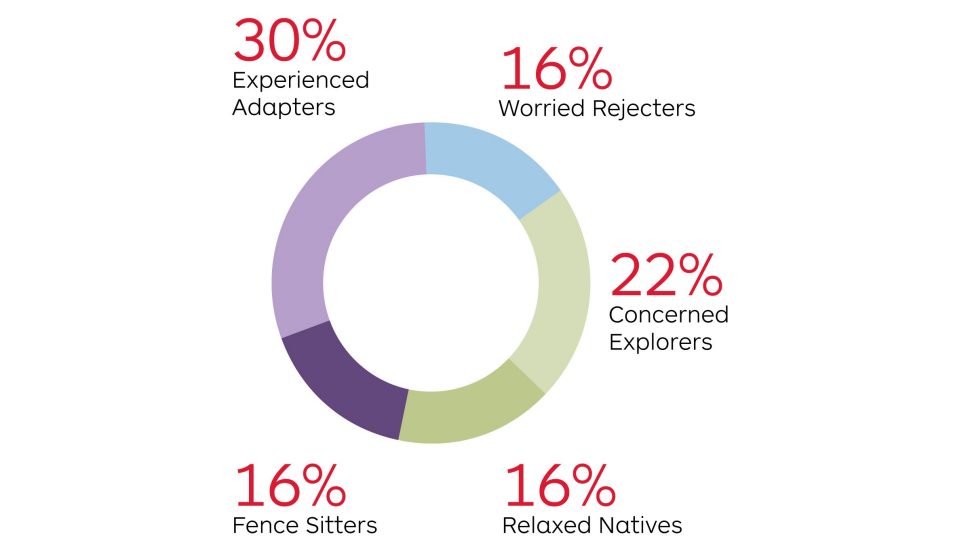What’s holding customers back from using your online services?
Australians are online more frequently than ever. A recent research study conducted by BehaviourWorks Australia (BWA) at Monash University found that 84 per cent of those surveyed use the internet at least once daily and 60 per cent use it several times a day.
However recent research from Australia Post has also found that 26 per cent of Australians surveyed use the internet infrequently, and rarely beyond a quick online search or sending email. The number one reason for this? They’re simply not interested.
Changing habits is hard yet the success of disruptive technologies like Uber, Airbnb and Amazon prove that it’s possible to encourage consumers to adopt a completely different way of transacting – at scale. Online banking has effectively become mainstream as has comparing airfares or hotel reviews online.
But according to Australia Post’s latest insight paper, Australia’s pathway to a digital economy, eCommerce consistently languishes towards the end of our digital adoption pathway.

The research study, conducted by BWA, investigates the issue of digital inclusion. But its results indicate the digital divide is not binary and in fact depends on the interplay of the following three factors:
- Digital access: Thinking beyond the digital divide
- Digital ability: The role confidence plays
- Digital attitudes: The psychology of online behaviour
Additionally, each of the five behavioural segments identified in this research demonstrates how these elements impact the uptake of digital services.

Digital access: Thinking beyond the digital divide
For infrequent users (the Non-users and Samplers in the chart above), lack of access follows a lack of interest, and in Australia, access depends on a combination of affordability and connectivity.
While the NBN’s intent is to provide equality of access through regional and rural Australia, the World Economic Forum gave our nation the lowest score for affordability of internet access in 2016.
According to the research commissioned by Australia Post, respondents aged 65 years or over were least likely to have access to the internet at home or via a mobile device.
However, in general, improving access didn't rate as a suggestion for increasing the uptake of any digital services, with the exception of watching movies and TV shows or listening to music. Speed and bandwidth, on the other hand, can make an obvious difference.
Digital ability: The role confidence plays
While the majority (93 per cent) of Australians surveyed enjoy access to the internet, there are still some who may not have the required skills to engage online.
Among those with access, around one in four (23 per cent) also believed their abilities were ‘poor’ or ‘fair’. Respondents over 65 were most likely to rate their abilities as such.
However, once online, older adults engage deeply in online activities. It’s simply a matter of increased confidence resulting in improved skills.
In most cases, Samplers and Socialisers have taught themselves how to use the internet or learned through family or friends but they indicated that they would like to increase their skills.
While digital literacy initiatives such as Infoxchange’s Wired Community @ Collingwood can help, so can the design of user experience. An intuitive website that enables a smooth, efficient transaction can build confidence for the customer in their own abilities and in the brand.
Digital attitudes: The psychology of online behaviour
The study also measures attitudes towards various activities online. There’s positive agreement towards using the internet to look up information and keep in touch but respondents also express concern that ‘my personal information may be made available.’
So what would encourage infrequent users to use the internet more? 52 per cent say they’d do more banking or pay bills online if ‘privacy and security was improved.’ For online shopping, 21 per cent say better options would encourage them to use eCommerce more.
These potential barriers suggest both user experience (UX) and trust play a crucial role in increasing the adoption of digital services. A truly intuitive, user-centric design can reduce friction or frustration, and build trust in an organisation’s ability to deliver on its promise.
Even amongst the most savvy, digital adopters, use of online services is not universal, according to further research by Australia Post. Its 2016 survey found that while anxiety over technology dropped, concerns over complexity were on the rise.
If we look specifically at the barriers to online shopping, this complexity is quite tangible. Australia Post’s 2016 Online Shopping Study found the number one barrier across all segments was consumers’ inability to ‘assess the quality, look and feel, or fit of the product.’
The effort of organising a return and not being able to ask for help also rated consistently among both tech-savvy and traditional shoppers.
Customer experience has become a key differentiator across all industries and that experience goes beyond the technical user experience, the customer call centre or speed of delivery (though these things are important).
Exceptional customer experience prioritises trust, a simple and effortless process, and a memorable or emotional connection.
All those things can be done well on a digital platform as the most successful digital disruptors already know. And by adopting these principles across all customer touchpoints, it may be possible to move more consumers further along the digital pathway.
To find out more about the online behaviour of Australians, download Australia’s pathway to a digital economy.
Subscribe to our Building Business newsletter
Subscribe to our Building Business newsletter
Read engaging business stories, discover new ideas, and learn about great offers in our monthly business newsletter.
